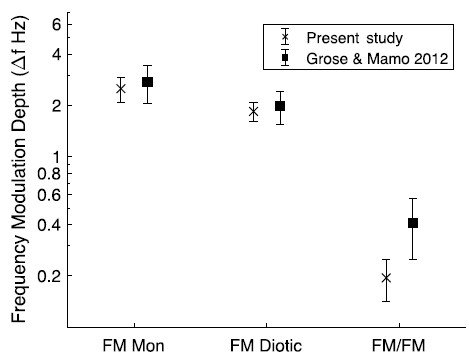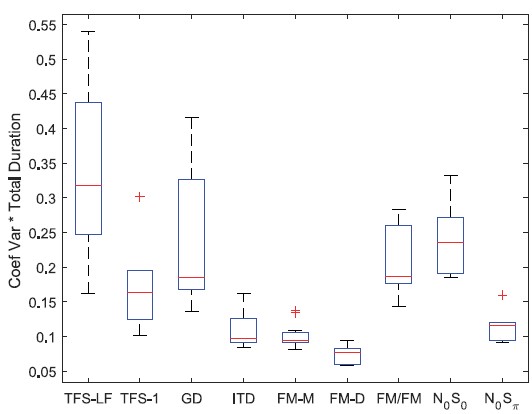Our Research Lab
Temporal Fine Structure Perception
Growing evidence supports the inclusion of perceptual tests that quantify the processing of temporal fine structure (TFS) in clinical hearing assessment. Many tasks have been used to evaluate TFS in the laboratory that vary greatly in the stimuli used and whether the judgments require monaural or binaural comparisons of TFS. The purpose of this study by Hoover et al. (2019) was to compare laboratory measures of TFS for inclusion in a battery of suprathreshold auditory tests. A subset of available TFS tasks were selected on the basis of potential clinical utility and were evaluated using metrics that focus on characteristics important for clinical use.
TFS measures were implemented in replication of studies that demonstrated clinical utility. Monaural, diotic, and dichotic measures were evaluated in 11 young listeners with normal hearing. Measures included frequency modulation (FM) tasks, harmonic frequency shift detection, interaural phase difference (TFS-low frequency), interaural time difference (ITD), monaural gap duration discrimination, and tone detection in noise with and without a difference in interaural phase (N0S0, N0Sπ). Data were compared with published results and evaluated with metrics of consistency and efficiency.
 Replication example. TFS as indexed by frequency modulation detection in comparison
to the data of Grose & Mamo (2012).
Replication example. TFS as indexed by frequency modulation detection in comparison
to the data of Grose & Mamo (2012).
Thresholds obtained were consistent with published data. There was no evidence of
predictive relationships among the measures consistent with a homogenous group. The
most stable tasks across repeated testing were TFS-low frequency, diotic and dichotic
FM, and N0Sπ. Monaural and diotic FM had the lowest normalized variance and were the
most efficient accounting for differences in total test duration, followed by ITD. Efficiency computation. The product of coefficient of variation and total test duration
for each measure as an index of the efficiency similar to sweat factor. FM-Dichotic
produced the greatest accuracy in the least amount of test time.
Efficiency computation. The product of coefficient of variation and total test duration
for each measure as an index of the efficiency similar to sweat factor. FM-Dichotic
produced the greatest accuracy in the least amount of test time.
Despite a long stimulus duration, FM tasks dominated comparisons of consistency and efficiency. Small differences separated the dichotic tasks FM, ITD, and N0Sπ. Future comparisons following procedural optimization of the tasks will evaluate clinical efficiency in populations with impairment.